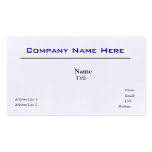For those of you who haven’t heard, there’s a new marketing platform in town.
Designed for enterprise communication, Slack is a messaging app that’s been rapidly gaining popularity.
Slack provides a real time messaging service, which creates a platform for so-called Slack communities. Slack communities, in turn, provide a place for companies and individuals to communicate, collaborate on products, search new channels and enhance visibility.
Here’s everything you need to know about Slack and why you should consider hopping on the Slack bandwagon.
How Does Slack Work?
Slack provides chat rooms for community and enterprise use. Unless someone opts to use a private chat room, Slack allows a transparent view of all conversations being conducted within the platform. This creates enhanced collaboration and greater communication within a company. Different sectors of a company, such as accounts, marketing and media teams can establish individual chat rooms and employees can contact one another via the app’s direct message or private chat room services.
To enhance collaboration, Slack allows sharing of all files, including images, PDFs, documents and spreadsheets. Chat rooms feature an easy drag-and-drop feature, which allows everyone involved to have instant access to new and updated documents. Additionally, all documents are fully editable and can be commented on, shared and searched by all members. The app syncs with Google Drive, Dropbox and Box for enhanced usability.
Additionally, the Slack platform allows users to connect all the tools a company uses to the app, which allows for total integration. Finally, the app is fully searchable and compatible with iOS and Android. Changes on one device are made across all devices, so users always have access to current versions of all work.
Who Uses Slack?
Currently, major companies like eBay, Urban Outfitters and Buzzfeed are using Slack to step up their internal communication. These companies use the platform to conduct team conversations in the app’s open channels and provide chat rooms for different sectors of the company to talk about and collaborate on current projects.
These companies aren’t Slack’s only fans, however: in the last six months, Slack has more than doubled its number of daily users from 100k to more than 500k and that number is growing quickly.
It’s More than Just Enterprise Communication
Although Slack rose to popularity as a workplace collaboration tool popular among employees and managers, it’s now being used for far more than enterprise communication. The platform is beginning to see a myriad of independent groups forming. Currently, there are over 100 public slack channels making use of the platform. These groups are aimed at everything from technology and business to marketing. For interested parties, these groups can provide a wealth of information and marketing possibilities.
Popular Slack communities such as startupstudygroup and #smallbiz provide a valuable space for professionals to communicate, collaborate and plan together. Additionally, these communities are a great place to gain more information about a niche, connect with new contacts and learn more about any given field.
The Pros of Slack Communities
For people who want to connect with other like-minded individuals, Slack is a great place to do it.
The community platform is unique to the world of social media in that it allows for more attention with less competition. While there are 4 million groups on LinkedIn, there are less than 200 active or popular groups on the Slack platform. Since Slack is relatively new and not yet saturated by users, Slack communities are small, tight-knit groups that offer a whole lot of bang for their metaphorical buck.
Additionally, engagement rates on Slack are much higher than they are elsewhere. Thanks to Slack’s interactive dashboard and real-time feature, the app acts like a text messaging service and inspires users to check in on their groups frequently. Humans love instant gratification, so posting something and knowing that other group members will interact with it immediately is a very satisfying prospect. Unlike a blog post, in which a poster writes something and waits for replies from readers, Slack is instant, which encourages frequent check-ins and regular interaction on the part of users.
Finally, the service is free. The lack of a price tag means that marketers can get out of it exactly as much, if not dramatically more, than they put in. The process of using Slack is amazingly easy: interested parties simply pick a topic, create a community, promote the community and then add it to the Slack directories. After the initial push, the community requires only some light moderation and some selective sub-topics to organize content. When companies link their community back to a company homepage, the community can drive visitors to the business and promote engagement with products, goods and services.
Cons of Slack Communities
While the Slack app has many obvious pros, it also has a few cons surrounding its presentation. Users complain that the app’s “read message” notifications can be obnoxious and the readability of the Slack communities pages can be difficult. Additionally Slack does not currently offer a “discover” feature, which can make it difficult to find new groups unless you know what you’re looking for. Finally, the ultra high-tech and interactive Slackbot help center is irksome to some people.
All things considered, for those who don’t mind sticking with Slack as it works out some of its new startup glitches, Slack communities can be a great way for companies to market, interact, collaborate and communicate.
The Case for Slack Communities
For people who want to take advantage of an effective, low-stress, low-competition marketing environment, Slack is a great place to look. The app provides all of the benefits of real time communication and niche-related conversation with the added perk of being able to tie the entire thing back to a company homepage.
Although Slack has put a fresh new spin on online communities, the service is still meeting the age-old goal of content marketing: providing great content to readers and potential customers. While Slack communities are an effective and exciting way for companies and individuals to find like-minded people, collaborate and communicate, they are also a great way for marketers to provide great content, promote vibrant interaction and drive traffic to a site. All things considered, it seems like we should all be hopping on the Slack bandwagon.







No comments:
Post a Comment